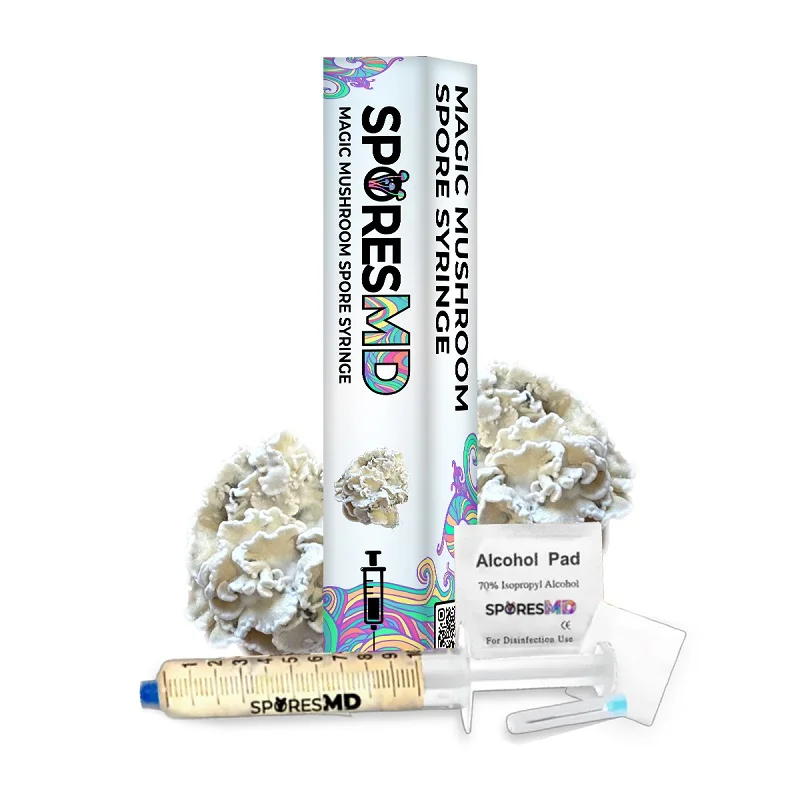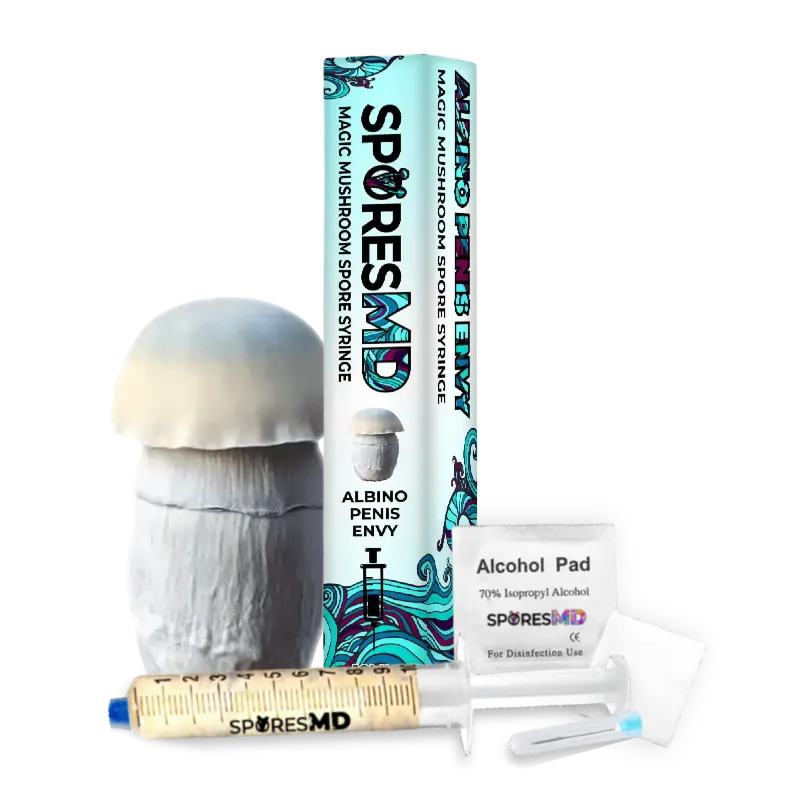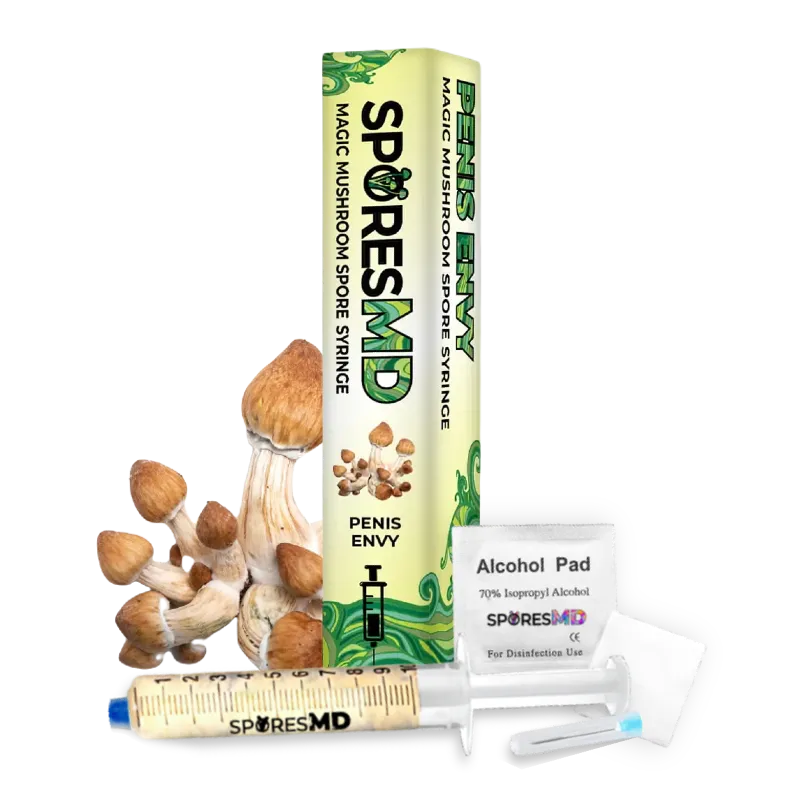The Enigma mushroom is a mystery. Its brain-like structure and potent effects captivate mycologists and cultivators alike. Unlike typical mushrooms, it doesn’t produce spores. This means you rely on tissue cloning for cultivation.
Harvesting this unique mutation of microscopy requires precision. You adjust environmental conditions to trigger fruiting. Then, you carefully monitor the growth and potency before harvest. The result? A fascinating specimen that challenges traditional cultivation methods.
With its unique appearance and cultivation demands, the Enigma mushroom offers both challenges and opportunities. As you delve into its world, you’ll discover the intricate balance needed to unlock its potential.
Key Takeaways
- Unique Characteristics: Enigma mushrooms feature non-sporulating traits and dense, brain-like clusters, requiring tissue cloning for reproduction and boasting high psilocybin levels.
- Environmental Conditions: Maintaining a consistent temperature of 21-24°C (70-75°F) and humidity levels of 85-90% is crucial for optimal growth and successful harvest.
- Precise Harvesting: Proper timing, observation of structural maturity, potency testing, and vibrant coloration are key indicators for harvesting Enigma mushrooms.
- Sterile Techniques: Use sterile gloves, sharp cutting tools, and airtight containers to prevent contamination and maintain the integrity and freshness of the mushrooms.
- Proper Storage: Post-harvest, store mushrooms in controlled environments with stable temperatures and low light to ensure maximum potency and freshness.
Understanding Enigma Mushrooms
Unique Characteristics
Enigma mushrooms exhibit non-sporulating traits, setting them apart from typical microscopy. Their dense, brain-like clusters form due to a genetic mutation, which means spores are not produced, making tissue cloning essential for reproduction. These mushrooms are known for their high psilocybin levels, which pique interest in fields like psychopharmacology and mental health research.
Growth Stages
The growth stages of Enigma mushrooms begin with tissue inoculation, as spore reproduction is not possible. First, the mycelium colonizes the substrate, leading to the development of blob mutations. Throughout this process, monitoring environmental factors such as temperature and humidity is crucial for optimal growth. Each stage requires careful attention to enhance the mushroom’s potency and ensure successful cultivation.
Preparing for the Harvest
Careful preparation is essential when planning to harvest Enigma mushrooms. Proper tools and conditions contribute significantly to a successful yield.
Materials and Tools Needed
Gather all necessary equipment before harvest to ensure a smooth process:
- Sterile Gloves: Prevents contamination during handling.
- Scalpel or Sharp Knife: Essential for precise harvesting without damaging mycelium.
- Storage Containers: Use airtight containers to maintain freshness and prevent moisture loss.
- Face Mask: Reduces the risk of introducing contaminants through breathing.
Ideal Harvesting Conditions
Optimal conditions are crucial for harvesting Enigma mushrooms:
- Firm Texture: Indicates full maturity and readiness for harvesting.
- Vibrant Coloration: Shows the mushroom’s health and potency.
- Stable Temperature: Maintain a temperature around 21-24°C (70-75°F).
- Controlled Humidity: Keep humidity levels between 85-90% to preserve texture and vibrancy.
These conditions help ensure a successful and potent harvest, maximizing yield and quality.
Harvesting Enigma Mushrooms
Harvesting Enigma mushrooms demands precision and timing to ensure optimal potency and yield. The unique, non-sporulating nature of Enigma requires specific vigilance.
Identifying the Right Time to Harvest
Observe Structure: Harvest when the brain-like formations reach the desired size. These are typically dense and firm.
Check Potency: Test small samples for potency, ensuring the chemical composition is optimal as the mushroom matures.
Color Evaluation: Look for vibrant color indicative of readiness. This visual cue often signals peak development in Enigma mushrooms.
Step-by-Step Harvesting Process
Prepare Tools: Use sterile gloves and a sharp knife or scalpel to avoid contamination.
Cut Carefully: Slice formations at the base. This technique helps maintain structural integrity and promotes regrowth.
Store Properly: Place harvested mushrooms in airtight containers. Ensure controlled temperatures and humidity levels to preserve potency and freshness.
By following these precise steps, you maximize both the quality and yield of your Enigma mushroom harvest.
Post-Harvest Handling
After harvesting Enigma mushrooms, focus on maintaining their potency and quality. Effective post-harvest handling is essential.
Cleaning and Sorting the Mushrooms
Clean and sort mushrooms promptly to avoid contamination. First, use a soft brush to remove any remaining substrate. Sort the mushrooms by size and firmness. Separate any showing signs of damage or unusual color. This step guards against spoilage and preserves quality.
Proper Storage Techniques
Store your clean mushrooms in a dry, controlled environment to prevent degradation. Place them in airtight containers to maintain their moisture levels. Keep temperature stable at 21-24°C (70-75°F) in low light. This method prolongs freshness and ensures maximum potency. Maximize mushroom quality by prioritizing effective storage.
Troubleshooting Common Issues
Dealing with Contaminants
Contaminants pose significant challenges, affecting potency and yield. To prevent contamination:
- Use sterile equipment and gloves at all cultivation stages to avoid introducing bacteria or mold.
- Ensure environmental controls maintain humidity and temperature within the ideal range to inhibit unwanted fungal growth.
- Regularly inspect growing areas and substrates for signs of contamination and address issues promptly by removing affected material.
Contamination risks can be minimized by adhering to strict hygiene protocols throughout the growth and harvest process.
Mushrooms Not Reaching Full Maturity
Inadequate environmental conditions often impede full maturity. To promote proper development:
- Maintain humidity between 85-90% and temperatures around 21-24°C (70-75°F) to support optimal growth.
- Monitor light exposure, keeping it minimal and indirect to avoid hindering development.
- Ensure substrate remains fully hydrated to provide necessary moisture for mushroom growth.
Careful environmental adjustments can facilitate maturity and enhance overall yields.
Tips for a Successful Harvest
Monitor Growth Conditions
Adjust the growing environment by keeping temperature at 21-24°C (70-75°F) and humidity between 85-90%. Consistent conditions ensure high potency and quality.
Assess Mushroom Readiness
Check structural size and vibrant coloration. Sample test mushrooms for potency. Reliable monitoring leads to timely harvests.
Optimize Tools and Equipment
Use sterile gloves, sharp scalpels, and airtight containers. Prevent contamination to maintain mushroom integrity.
Follow Correct Harvesting Procedures
Cut mushrooms at the base gently. This preserves the structure and maintains potency. Handle each step with precision and care.
Implement Effective Storage Methods
Store mushrooms in low-light, airtight conditions. Maintain stable temperatures at 21-24°C (70-75°F) to prolong freshness and potency.
Maintain Hygiene Protocols
Constantly clean tools and workspace. Address contamination with sterile practices. Proper hygiene secures optimal yield.
Cultivation precision, effective monitoring, and strict hygiene are crucial in harvesting Enigma mushrooms. Following these tips enhances both yield and quality.
Conclusion
Mastering the art of harvesting Enigma mushrooms requires dedication and precision. By understanding their unique characteristics and adhering to the outlined guidelines, you can optimize both potency and yield. It’s essential to maintain the right environmental conditions and use proper tools to ensure a successful harvest. Implementing effective post-harvest techniques and troubleshooting strategies further enhances the quality of your yield. As you navigate the challenges and opportunities of cultivating Enigma mushrooms, remember that attention to detail and a commitment to best practices are key to unlocking their full potential.

![6 Steps for a Successful Enigma Mushroom Harvest [Expert Guide]](https://sporesmd.com/wp-content/uploads/2024/08/enigma-mushroom-from-fungi.org-close-up.jpg.webp)




